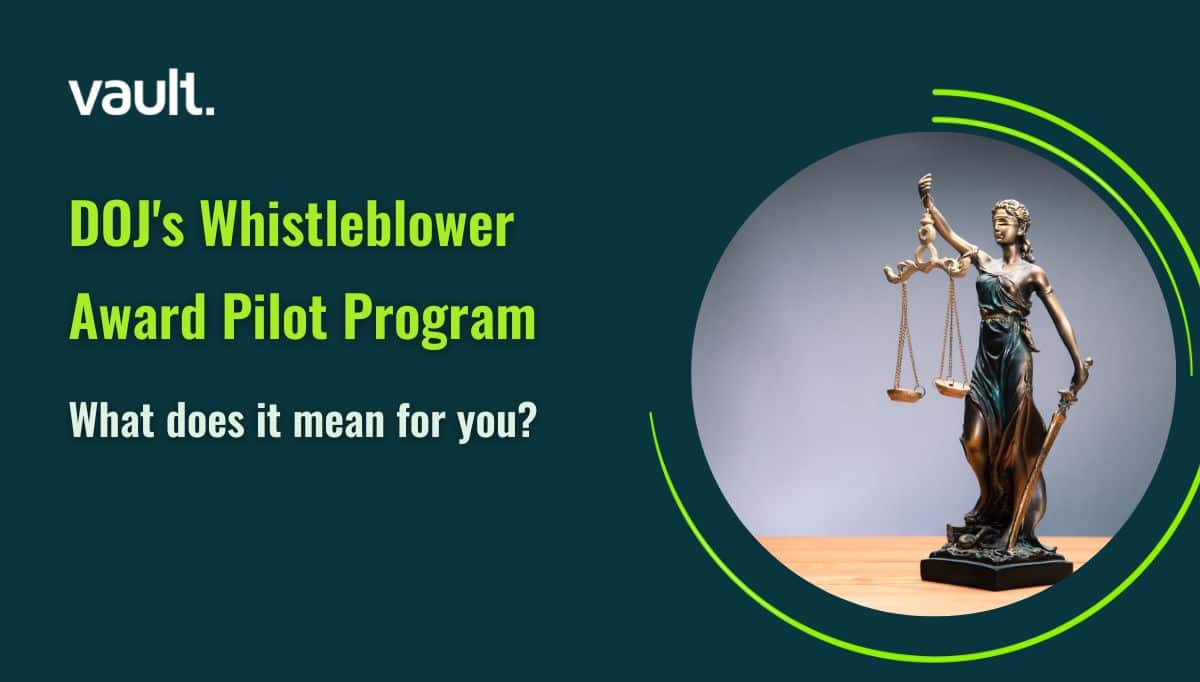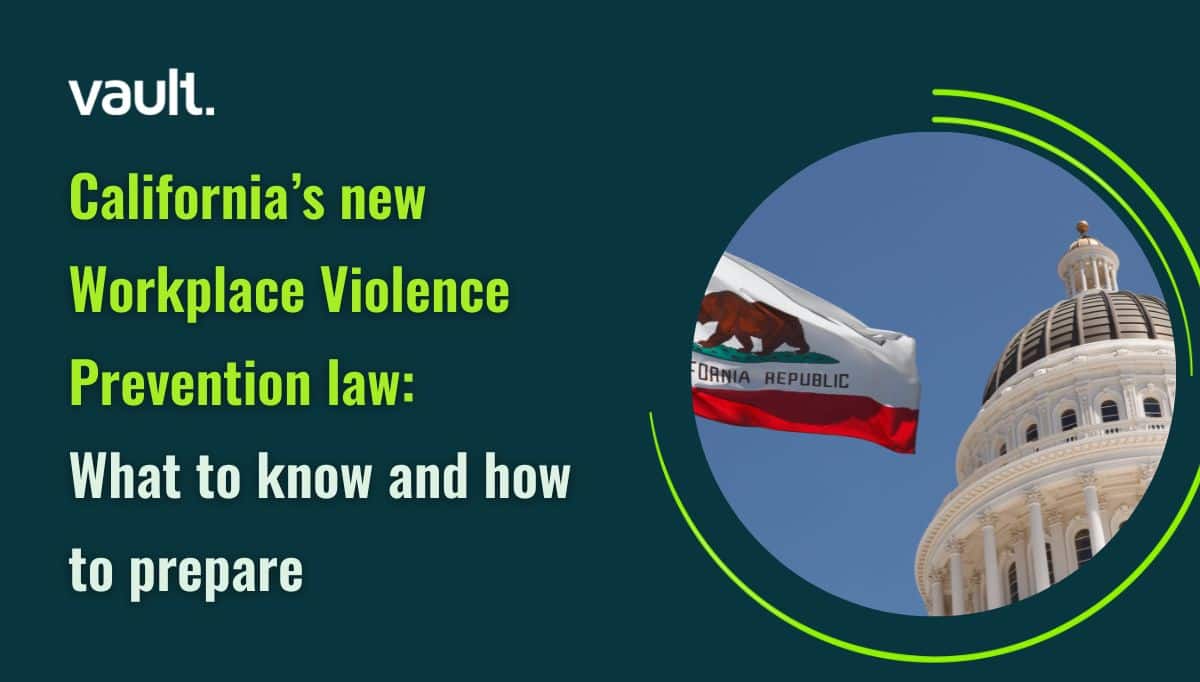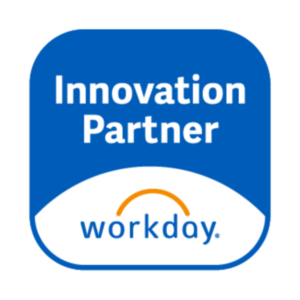
When employees witness misconduct at work, it can be difficult for them to report it, whether for fear of retaliation, because of the potentially career-changing repercussions, or a host of other reasons. It often falls to E&C professionals to empower employees to feel comfortable enough to Speak Up, safe in the knowledge that they’ll be heard and that appropriate actions will be taken. So what’s the best way to approach misconduct reporting to develop a speak-up culture?
1. Provide Employees With An Internal Reporting Channel
When deciding which reporting solution your organization should make available to employees, it’s worth noting the importance of providing an internal reporting channel. Hearing about and handling issues internally allows you to investigate the report and deal with it appropriately before the issue escalates and damages your brand’s reputation. If you choose an external solution, such as a third-party legacy hotline, there is a greater risk of reports not being dealt with in a timely manner or that systemic issues are overlooked. Employees may see this as a sign that the organization doesn’t take incidents seriously enough, in which case they may leave the business and you only hear about incidents via external channels, such as social media platforms.
Adopting an internal misconduct reporting solution isn’t just better for the business. Evidence also shows that employees would prefer an internal channel to be available. Our Trust Gap survey, for example, found that 84% of office workers believe that internal whistleblowing is vital to ensuring that people are protected from the negative impacts of workplace misconduct.
2. Facilitate Anonymity
Our Trust Gap survey also highlighted how important anonymity is to employees. 81% of employees expect their employers to invest in workplace misconduct reporting channels that provide anonymity to the reporter. Retaliation against reporters comes in many forms, from bullying to losing their job, so it’s important to facilitate reporting mechanisms that make employees feel safe.
Additionally, 76% of office workers believe that an anonymized app-based reporting channel would help support the issue of reporting workplace misconduct and empower employers to support a positive and safe workplace. The Vault mobile app provides your workforce with a trusted and highly accessible way of capturing all relevant details of workplace misconduct. This creates a frictionless experience that encourages people to come forward internally with confidence and without fear of retaliation.
3. Allow Reports to Be Made In-Person
There will always be a subset of employees who would prefer to speak to someone face-to-face in order to give their account of an incident. You should therefore encourage employees to choose the right method for them, whether via an app-based solution or talking through the incident ahead of capturing it digitally.
4. Cater for Those That Prefer A ‘Strength in Numbers’ Approach
As well as seeking anonymity and confidentiality, some reporters would prefer to only report misconduct if others have reported similar incidents. Vault’s GoTogether™ feature enables employees to surface a report under the condition they’re part of a group i.e. when another Vault app user in their organization names the same specific individual as an alleged wrongdoer. It is eight times more likely to be used as the reporting option for women reporting behavioral misconduct like harassment.
This ‘strength in numbers’ approach gives employees more confidence that there are other voices willing to Speak Up and, like them, protect their community and the organization from the alleged wrongdoer.
5. Remember to Listen and Feedback to Reporters
For a Speak-Up culture to thrive, there needs to be a countervailing Listen-Up culture. Regardless of how a report reaches you, it’s crucial to take allegations seriously, provide an empathetic ear to reporters, and create a workplace environment that rewards them and takes action following thorough investigations.
In our recent ‘The Way the Whistle Blows’ webinar, the panel shared some key practical tips for managing investigations, including the importance of listening to reporters and treating them thoughtfully and respectfully. It’s also important to stay in contact with the reporter to the extent possible so that they know what’s happening as a result of their report and to minimize the risks of making headlines for the wrong reasons.
Ready to revolutionize misconduct reporting and resolution for your employees? Book a demo today.
***
Frequently Asked Questions
What is the best way to create a Speak-Up culture in an organization?
In order for a Speak-Up culture to thrive in any given organization, there needs to be a countervailing Listen-Up culture. Regardless of how a report reaches you, it’s crucial to take all allegations seriously, provide an empathetic ear to reporters, and create a workplace environment that rewards them and takes action following thorough investigations.
How can employees be encouraged to Speak Up about misconduct they’ve experienced or witnessed?
Our Trust Gap survey, for example, found that 84% of office workers believe that internal whistleblowing is vital to ensuring that people are protected from the negative impacts of workplace misconduct. Employees can be encouraged to Speak Up through providing them with an internal reporting channel, facilitating anonymity, allowing in-person reports, catering for those that prefer a ‘Strength in Numbers’ approach, and remembering to listen and offer feedback to reporters.
What are some of the risks associated with whistleblowing?
In our recent webinar, we shared practical tips for managing investigations, including the importance of listening to reporters and treating them thoughtfully and respectfully. However, there can be issues associated with whistleblowing, like making headlines for the wrong reasons, so it is crucial to stay in contact with the reporter to minimize potential risks.
What should be done when a report of misconduct is received?
When a report of misconduct is received, it’s crucial to take allegations seriously, provide an empathetic ear to reporters, and create a workplace environment that rewards them and takes action following thorough investigations. Retaliation against reporters comes in many forms, from bullying to losing their job, so it’s important to facilitate reporting mechanisms that make employees feel safe.




